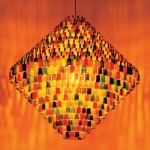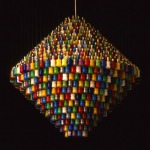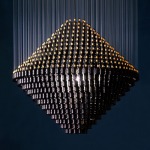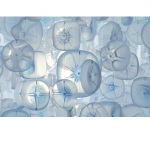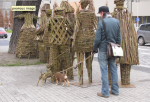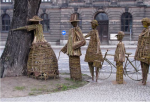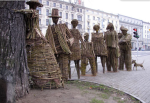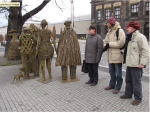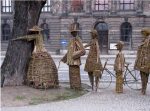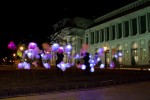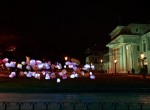Stuart Haygarth is a light designer that has been looked at a new eco-artist that uses “junk” to create beautiful lights. A series of his projects called Millennium from 2004 initially started by a one time piece where he sculpted 1000 explosive party poppers from the Millennium celebration in London in a shape of a chandelier. This work created a new series of works where he collected new party poppers to create lights.
- Millennium By Stuart Haygarth (2004)
- Millennium By Stuart Haygarth, (2004)
- Millennium By Stuart Haygarth, (2004)
On his site he perfectly explains the issue I have been talking about with recycling and how the inspired his project called “Drop”, in 2007.
“Drinking mineral water has become such an integral part of contemporary culture. There are many brands available and which brand you drink has become a lifestyle statement. One of the repercussions of this healthy drinking culture is the fact that the empty plastic water bottles are littering our landscapes and seas. Our landfill sites are being filled at an incredible rate with these plastic containers. Currently at airports we are not allowed to take water bottles through security checks and thousands of empty or half full bottles are confiscated. The water containers used in the work are donated and collected from Stansted Airport, London. This work focuses on the overlooked beauty and variety of these plastic water containers by concentrating on a small detail section, the base. The visual appearance of the plastic is slightly altered to produce a frosted glass quality. The first Drop chandelier was produced as a performance piece during Design Miami 2007.”
- Drop By Stuart Haygarth, 2007
- Drop By Stuart Haygarth, 2007
He has a lot more work on his site, go check it out.
Work Cited:

